Colored building lighting, by sharing light within architectural environments, enhances the building facade with a beautiful and attractive appearance. This type of lighting, using colored LED lights and various techniques, allows for the creation of diverse and creative visual effects.
Importance of Colored Building Lighting
- Increasing Visual Appeal: Colored lighting can give a beautiful and attractive appearance to the building facade and draw people’s attention.
- Creating Identity and Character: By using different colors, buildings can be given a unique identity and character that distinguishes them from other buildings.
- Improving Security: Proper lighting can help increase the security of the building and illuminate dark and dangerous areas.
- Increasing Property Value: Professional lighting can increase the value of the property and make it more appealing to buyers and tenants.
- Creating a Pleasant Atmosphere: Colored lighting can create a pleasant and relaxing atmosphere that is enjoyable for the building’s occupants.
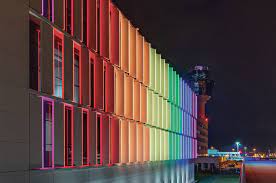
Types of Colored Building Lighting
Colored lighting in buildings can create diverse and attractive visual effects. Here are some of the colors used in building lighting:
White Light: White light is typically used for general illumination and highlighting architectural details.
Blue Light: Blue light can evoke a sense of calm and tranquility, symbolizing peace, grandeur, the sky, and more. If the exterior facade of the building is classic and made of materials like white plaster, choosing blue for the lighting is a suitable option. Remember that blue is one of the significant colors in palaces and royal houses, so a classic building adorned with blue lighting will have an extraordinary impact on people. There is no need for sensitivity in blue lighting as the shades of this color do not cause eye fatigue.
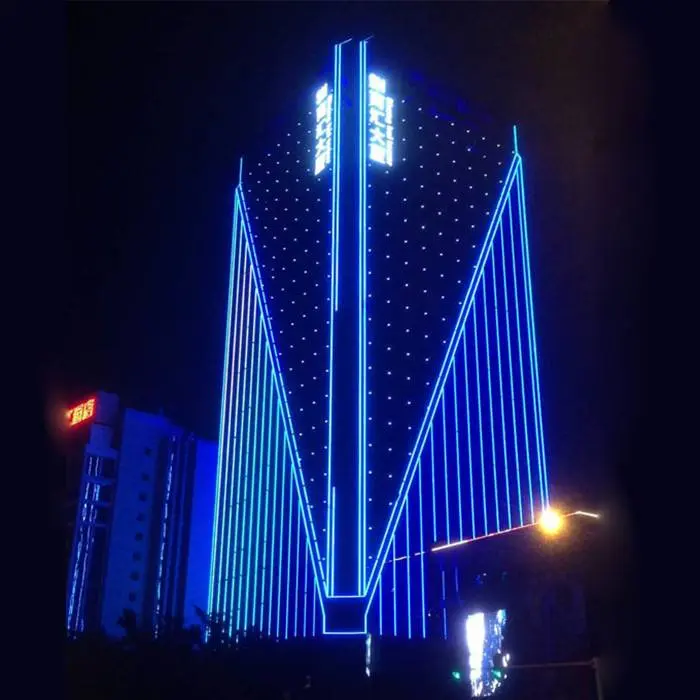
Red Light: Red light is typically used to create a sense of warmth and energy and is reminiscent of themes such as youthful enthusiasm, energy, fire, etc. Different shades of this color can be used in building lighting, but you should be mindful that if the materials used in the building facade are dark or neutral colors, red is very suitable for lighting. However, you must be very careful when using red light, as overuse can cause the building to lose its grandeur and apparent significance at night.
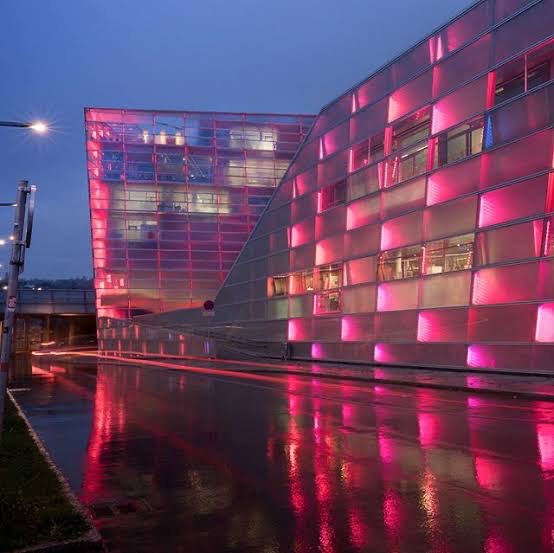
Green light: Green light can evoke a sense of freshness and nature and is suitable for open spaces and gardens, as it is primarily a symbol of nature. In Islam, particularly in Shia Islam, the color green has a spiritual and sacred connotation, and green light is often seen in mosques and shrines. If you want to use green light for modern buildings, it’s important to know that green light on the exterior of modern buildings gives a mysterious feel and is not always widely appreciated.
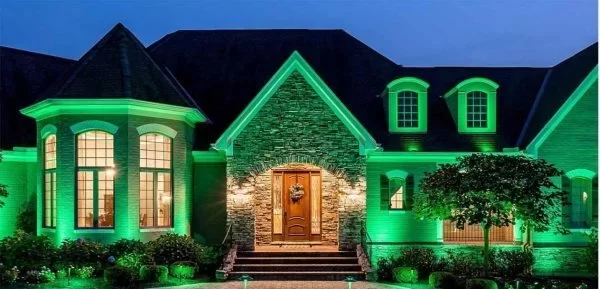
Yellow Light: Yellow light can create a sense of warmth and pleasantness and is suitable for both indoor and outdoor spaces. Yellow lighting is appropriate for various types of buildings, including tall, modern, classic, religious, and office buildings, and it virtually has no limitations.

Purple Light: Purple light can give a luxurious and elegant appearance to the building and is suitable for special and unique spaces.
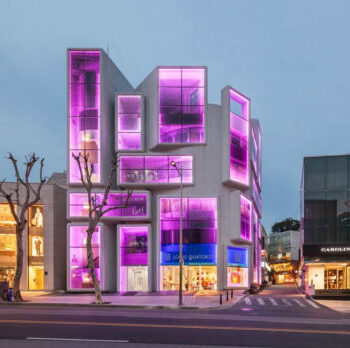
What Color is Suitable for Building Lighting?
Choosing the right color depends on various factors, including architectural style, surroundings, and the purpose of lighting. Here are the factors that influence the choice of suitable color for buildings:
Architectural Style: For modern buildings, neutral and sleek colors like white and blue are suitable. For classic buildings, warm and natural colors like yellow and red are better. Another important point about lighting classic buildings is the color of the facade materials, which are often in different shades of cream. Therefore, for illuminating classic facades, warm or neutral colors such as cream, white, gold, and light brown are good choices.

- Surrounding Environment: If the building is located in an urban area, using striking colors like red and blue can attract attention. In natural areas, green and brown colors that harmonize with the environment are more suitable.
- Purpose of Lighting: If the goal is to create a sense of calm and tranquility, blue and green colors are appropriate. For creating a sense of energy and warmth, red and yellow colors work better.
- Lighting for Events and Occasions: One of the common practices worldwide is lighting building facades in different colors during events, ceremonies, and cultural-artistic occasions. The colors used in lighting are inspired by the symbols and origins of the events and celebrations.

 English
English العربية
العربية

















